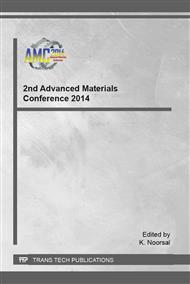p.593
p.598
p.603
p.608
p.612
p.619
p.624
p.629
p.634
Thermal Effect of the Spray Drying Process on the Quality of Tongkat Ali Extract
Abstract:
The effect of heat on the quality of spray dried Tongkat Ali extract was investigated at three different air inlet temperatures (100°C, 180°C and 2200C). Response surface methodology employing the Box-Behnken Design was employed to hunt for the optimum operating conditions at these temperatures. Good retentions of eurycomanone, total polysaccharides and glycosaponins were exhibited during the spray drying process. However, protein was found to be susceptible to thermal degradation during the spray drying process. Use of high air inlet temperatures (i.e. 1800C and 2200C) in spray drying led to greater process yield, lower moisture contents, produced non-sticky particles, and resulted in good powder size distribution of Tongkat Ali extract compared to spray drying at 1000C.
Info:
Periodical:
Pages:
612-616
Citation:
Online since:
January 2016
Price:
Сopyright:
© 2016 Trans Tech Publications Ltd. All Rights Reserved
Share:
Citation:


